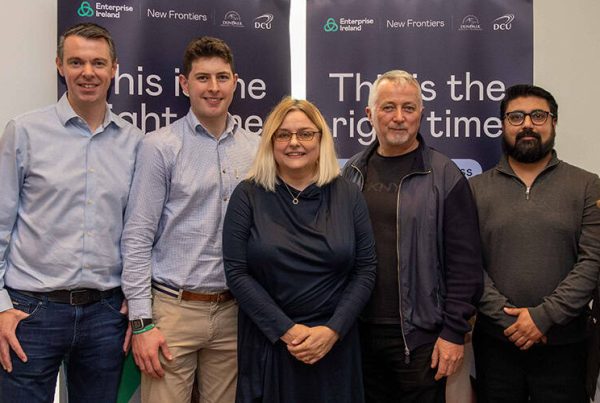
Startups need cash to keep going – it’s a simple case of having money so that you can make money. Most entrepreneurs get preoccupied with finding sources for large scale funding, rather than concentrating on how to make the money they have go as far as possible. By accurately identifying how your money can best be utilised, you can plan how much funding you actually need and improve your chances of raising capital.
Money is the lifeblood of any bootstrapping entrepreneur and usually the thing in shortest supply when starting up. In fact, many startup failures can be attributed to poor cashflow, so getting your financial planning and management right is crucial to success.
Thinking ahead is the way to success
Participating on the New Frontiers programme provides entrepreneurs a six-month financial lifeline. But too many startup entrepreneurs focus on getting the BIG investment and forget about the day-to-day costs that can’t be put on hold. Investors always take longer than you think; they don’t just drop the money in your bank account.
So, while you’ve spent the last six months developing a compelling business plan and investor pitch, you’ve also spent all your cash getting to this point. For the best chance of survival, you need to have a game plan for what happens next, at least three months before the end of any support/cash.
Starting a business always takes more time than people imagine and things don’t always go according to plan, so you should work on a strategy for paying the bills (both business & personal) for at least another six to 12 months (as it can take that long for investment to materialise).
To make a compelling case, you need accurate forecasts that are backed up with sound reasoning:
What for?
You need to be clear as to what you will use any funds for – further product development, testing or trialling, customer prospecting, equipment, office facilities, inventory/stock, staff. Make a wish list, with a timeline (at least monthly) beside each item, just as you would for your business roll-out plan.
How much?
Beside each item on your wish list, give an accurate cost and identify if it is a one-off or ongoing expenditure. Add these together and you get a total – which is probably way too high!
Now go back and review every item on the list.
Ask yourself the following questions:
- Do you really need it?
- What benefit will it be to your business now?
- Could you defer buying it until later?
Prune your wish list as necessary and revisit that total amount, with a strong justification or business case for each line.
I’ve included a template you can use to plan for your short-term funding needs. (Word document).
Make a balanced case for your funding needs
With this work done, you have a better chance of identifying who could support that kind of expenditure for a startup. That is, what mix of sources will you now approach in order to keep going, while at the same time setting up bigger investment channels for the long-term future of your enterprise?
The main thing to bear in mind when looking for money is preparation. If you leave it to the last minute to ask for money, it’s the easiest thing in the world for someone to say ‘No’. You want to give them more reasons to say ‘Yes’. Then you can keep going, in the short-term, while planning for a bigger, brighter future – which is the next part of your journey from startup to scaling business. The New Frontiers programme provides just the set up to enable you to do that successfully.
About the author
 Colm Ó Maolmhuire
Colm Ó Maolmhuire
Colm is the New Frontiers Programme Manager at TU Dublin – Blanchardstown Campus. He has nearly 30 years’ experience operating as an independent, professional management trainer, mentor and consultant. His main areas of expertise are in finance, business planning/analysis and management skills.
Recent articles

Founder Perspectives: Lessons From Building Businesses In Sustainability

Tech Startups In The Age Of AI: Alumnus Paul Savage On Speed, Quality & Risk

Fourteen Startup Founders Graduate From Phase 2 Of New Frontiers In Tallaght

Eleven Founders Graduate From New Frontiers In The Border Mid-East Region

Laying The Right Groundwork Helps Startups Prepare For Export Success

Startup In Dublin: Learn More About New Frontiers On TU Dublin’s Grangegorman Campus

Michael Furey On The Success Of Ronspot: “The Most Important Thing Is Research”

 Colm Ó Maolmhuire
Colm Ó Maolmhuire
